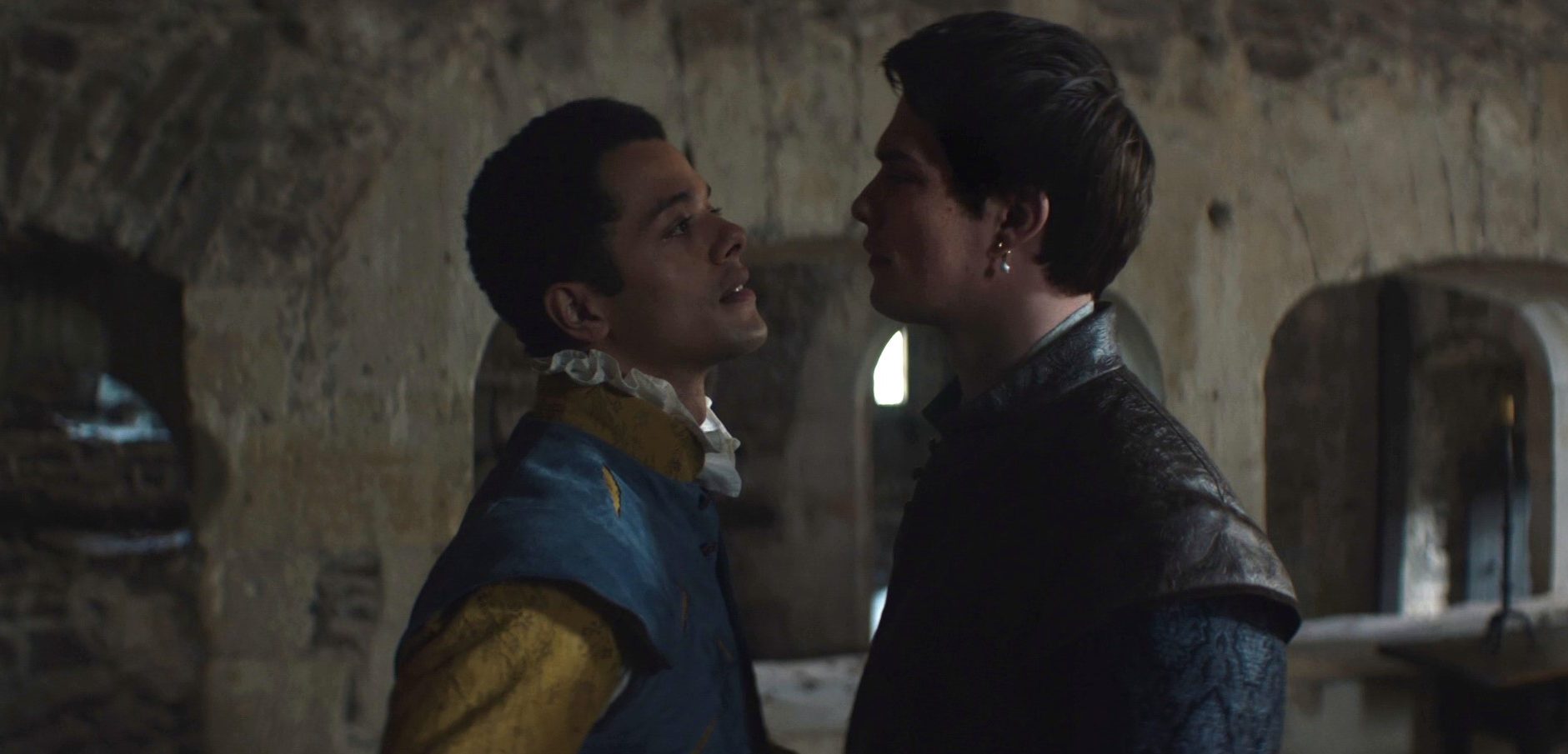In the fourth episode of Starz’s historical series ‘Mary & George,’ King James I leaves for Scotland, where he is protected by Peter Carr, a Scottish guard and a cousin of Robert Carr, the executed Earl of Somerset. When the king shares his affection with another man, George Villiers becomes intimate with Peter, which makes the former jealous. The secret sex with the guard leads the king’s new favorite to the historic Ruthven Castle, where Peter tries to kill George. Even though George and his mother Mary Villiers’ saga is based on a true story, Peter and his attempt to kill the king’s lover seemingly didn’t exist!
The Significance Behind Peter Carr’s Creation
There aren’t any records of Robert Carr, the 1st Earl of Somerset, having a cousin named Peter Carr, who served King James I as his guard. The historical accounts from the 17th century also don’t mention someone from the Carr family trying to exact their vengeance on George Villiers at the infamous Ruthven Castle. Benjamin Woolley’s ‘The King’s Assassin: The Fatal Affair of George Villiers and James I,’ the source text of D.C. Moore’s period drama, doesn’t mention a Scottish guard named Peter Carr. Therefore, he is seemingly a fictional character Moore conceived for the sake of the fourth episode, ‘The Wolf and the Lamb.’

The history of Christopher “Kit” Villiers, the 1st Earl of Anglesey, backs such a conclusion. In the series, Peter takes George to Ruthven Castle to kill him for paving the executions of the former’s cousin Robert and the latter’s wife Frances Carr, the Countess of Somerset. When George becomes helpless, Kit shows up to shoot Peter down. Pleased with Kit’s intervention, King James rewards him with the title of the Earl of Anglesey and proclaims him as a hero. In reality, Kit earned the earldom but not for killing the man who tried to murder the king’s lover.
King James ennobled Kit as the Earl of Anglesey and Baron Villiers of Daventry to persuade him to give up his mistress. In the show, he receives the earldom right after murdering Peter. In real life, however, the earldom awaited him for around a year. “The patent was delayed for a year, but Kit eventually managed to obtain his peerage without relinquishing the wench… The historical Kit Villiers, Earl of Anglesey, summed up all that was unsavory and corrupt with the court of James I. The younger brother of the royal favorite, the Duke of Buckingham, Anglesey had greatness thrust upon him,” reads a renaissance paper from 1978.

King James respecting Kit’s valor for killing Peter and proclaiming him as a nobleman, as the show depicts, likely never happened. In his source text, Woolley wrote that George was burdened with the reward James gave his brother. “He [George] strained to express the debt of gratitude he owed the king – most recently for the favor shown to his ‘little deserving’ dipsomaniac brother Kit, just made Earl of Anglesey,” reads the non-fiction book, making it clear that Kit didn’t kill any Scottish guard to earn his earldom deservedly.
Moore must have created Peter to display the stakes of becoming King James’ lover. George earns the king’s heart without realizing the dangers associated with his actions. He blindly trusts his mother and hopes she will deal with the complications arising when he earns his place on James’ bed. He doesn’t initially understand that the mother and son inevitably have to share the enemies Mary makes. The fictional Peter’s attack on him may have convinced George that he is involved in the game Mary plays without an easy escape. The higher the stakes, the better the drama, as far as Moore is concerned.
Read More: Mary & George: Is Sandie Inspired by a Real Prostitute?


You must be logged in to post a comment.